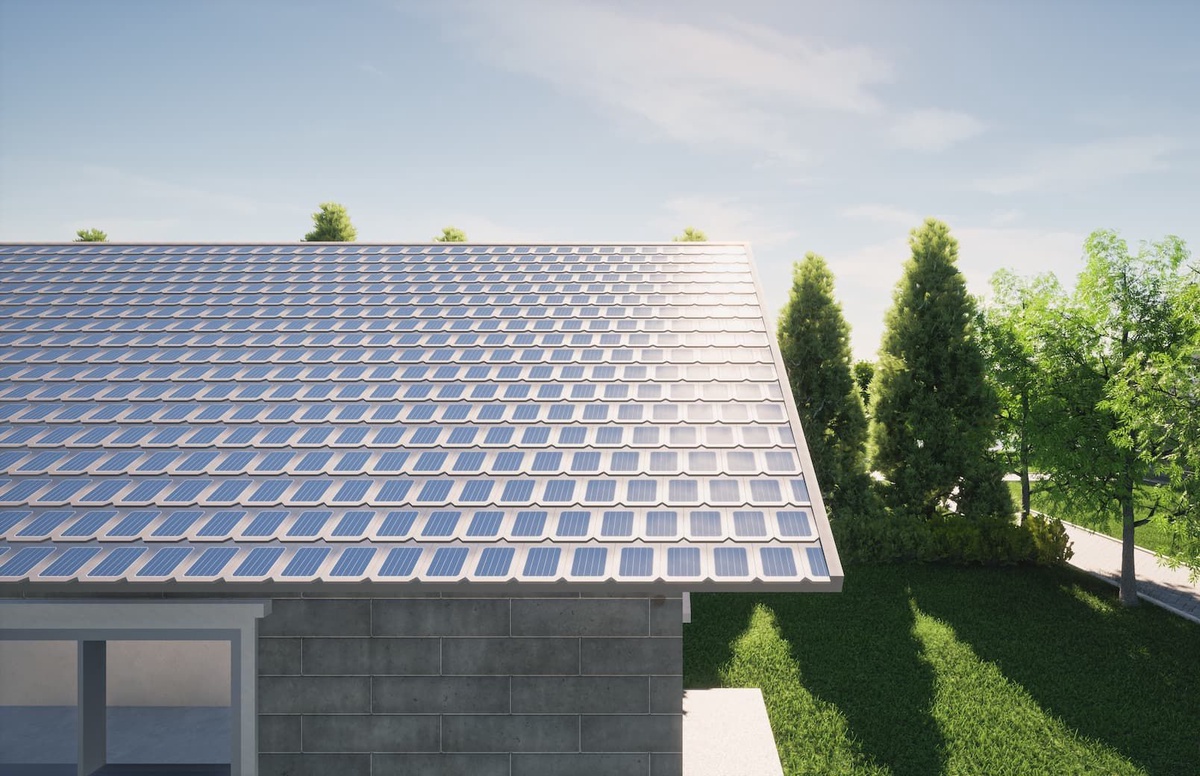As the world grapples with the need for clean and renewable energy sources, solar technology continues to advance, making it more accessible and attractive to homeowners. One innovation that has garnered significant attention is solar roof tiles. These revolutionary roofing materials not only protect your home but also generate electricity from the sun's abundant energy. In this comprehensive article, we will explore the concept of solar roof tiles, delve into their working mechanisms, discuss their benefits, and highlight their potential to reshape the future of energy generation.
What Are Solar Roof Tiles?
Solar roof tiles, often referred to as solar shingles or photovoltaic (PV) roof tiles, represent a groundbreaking approach to integrating solar power into residential and commercial buildings. Unlike traditional solar panels that are mounted on top of existing roofs, solar roof tiles are designed to function as both roofing materials and electricity generators. These tiles mimic the appearance of conventional roofing materials like asphalt shingles, slate, or terracotta, allowing them to blend seamlessly into the overall aesthetic of a building.
How Do Solar Roof Tiles Work?
The operation of solar roof tiles closely mirrors that of conventional solar panels. These are the key steps involved:
-
Photovoltaic Cells: Solar roof tiles are equipped with photovoltaic cells, usually made of crystalline silicon or thin-film materials. These cells capture sunlight and convert it into direct current (DC) electricity.
-
Aesthetic Integration: The most distinctive feature of solar roof tiles is their ability to mimic the appearance of traditional roofing materials. This is achieved through color, texture, and shape customization, ensuring they complement the visual design of a building.
-
Roof Integration: Solar roof tiles are installed directly onto the roof structure, eliminating the need for additional racking systems or mounting brackets. This integration with the roof maximizes sun exposure and energy generation.
-
Electricity Conversion: Once sunlight reaches the solar roof tiles, the photovoltaic cells convert it into DC electricity. An inverter then transforms this DC electricity into alternating current (AC), which can be used to power the building or stored in batteries for later use.
Benefits of Solar Roof Tiles
-
Aesthetic Appeal: Solar roof tiles provide an aesthetically pleasing solution for generating solar power. Their seamless integration into the roofing structure allows homeowners to maintain the architectural integrity of their property.
-
Efficiency: Solar roof tiles are designed to maximize energy production by aligning themselves for optimal sun exposure. This results in more efficient energy generation compared to traditional solar panels.
-
Durability: Solar roof tiles are built to withstand various weather conditions, including rain, wind, and hail. They offer the same protection as traditional roofing materials and have a long lifespan.
-
Increased Property Value: The installation of solar roof tiles can increase the resale value of a property. Buyers are increasingly attracted to homes with integrated solar solutions due to their long-term cost savings and environmental benefits.
-
Energy Savings: By generating their electricity from sunlight, homeowners can significantly reduce or eliminate their monthly utility bills. Excess energy can be stored or sold back to the grid through net metering programs.
-
Environmental Impact: Solar roof tiles contribute to a reduction in carbon emissions and a decreased reliance on fossil fuels, playing a vital role in building a more sustainable and environmentally-friendly future.
Installation and Costs
The installation process for solar roof tiles typically includes the following steps:
-
Roof Assessment: A professional assesses the condition of the existing roof to ensure it can support the installation of solar roof tiles.
-
Tile Installation: Existing roofing materials are removed, and the solar roof tiles are installed in their place. The wiring is discreetly routed beneath the tiles to maintain the aesthetic appeal.
-
Electrical System Setup: The electrical components, including inverters and monitoring systems, are installed to convert and manage the electricity generated.
-
Grid Connection: Solar roof tiles are connected to the building's electrical system and the grid, enabling the excess electricity to be exported or imported as needed.
The cost of solar roof tiles varies depending on factors such as roof size, complexity of installation, and location. Generally, solar roof tiles tend to have a higher upfront cost compared to traditional solar panels. However, the long-term savings and increased property value can offset the initial investment.
Challenges and Considerations
While solar roof tiles offer numerous benefits, there are also challenges and considerations to take into account:
-
Initial Cost: Solar roof tiles can be more expensive than traditional solar panels, and the return on investment may take several years to realize.
-
Installation Complexity: Installation can be more complex, and it is essential to engage experienced professionals to ensure proper integration and sealing.
-
Aesthetic Compatibility: Solar roof tiles may not be suitable for all architectural styles, and their appearance may not perfectly match certain roofing materials.
-
Maintenance: While designed to be durable, occasional maintenance may be required to ensure optimal performance.
-
Limited Availability: As of my last knowledge update in January 2022, solar roof tiles were not as widely available as traditional solar panels. However, this may have changed as technology continued to evolve.
Conclusion
Solar roof tiles represent a promising advancement in renewable energy technology, offering an elegant and environmentally-friendly way to harness solar power for homes and businesses. While they may not be the ideal solution for everyone due to their upfront costs and installation complexity, the benefits of reduced energy bills, increased property value, and environmental impact make them an enticing choice for those who prioritize sustainability and aesthetics.
As technology advances and becomes more accessible, the adoption of solar roof tiles is likely to increase, further accelerating the global shift towards sustainable energy sources and reducing our reliance on fossil fuels. These tiles have the potential to redefine the way we think about roofing and energy generation, creating a brighter and more sustainable future for generations to come.


No comments yet